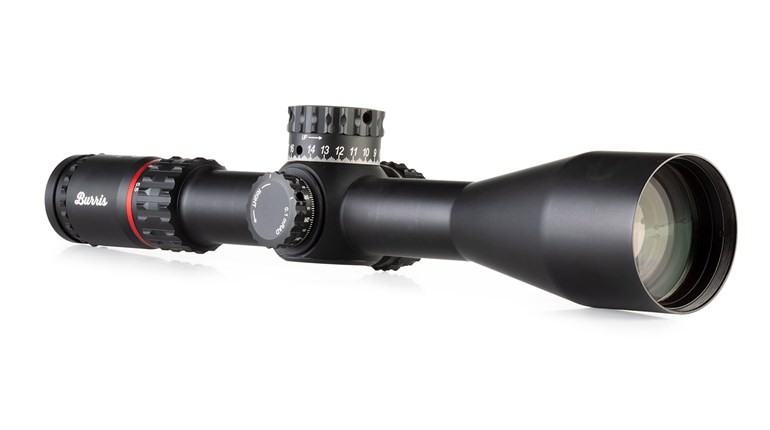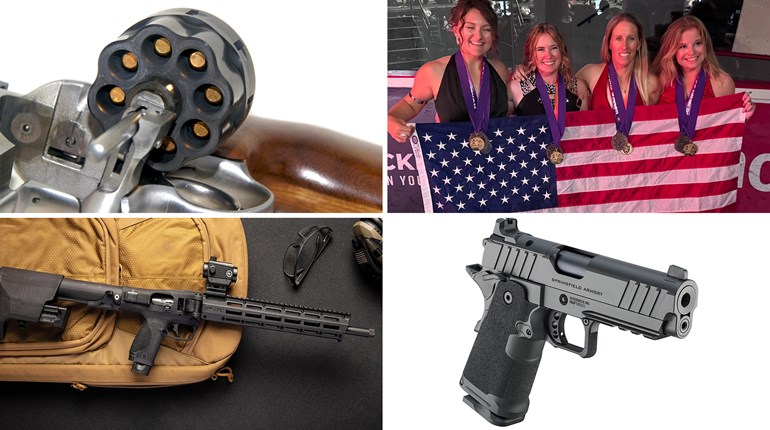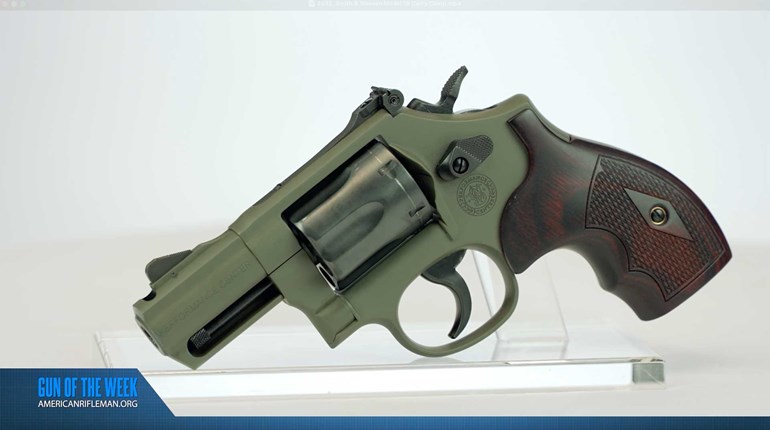Firearm: Smith & Wesson M&P9 M2.0 Metal (MSRP: $899)
It’s funny how seemingly small changes can make huge waves. When Smith & Wesson launched the M&P9 M2.0 Metal pistol, shock waves reverberated throughout the firearm world. It’s not like this is an unprecedented move, either—Walther had done it a few years ago with its Q4 steel-frame version of the PPQ pistol. Maybe shooters thought this heralded Smith & Wesson’s return to DA/SA metal-framed pistols?
In any case, the M2.0 Metal keeps all of the great upgrades in the M2.0 family, from the interchangeable backstraps that help fit the M&P to the shooter’s hand to the excellent bladed-safety trigger. Dimensions are identical save the weight—the aluminum frame adds 5.3 ounces to the overall weight. Considering that we’re talking about a full-size handgun that will be carried on a belt, this isn’t going to complicate carrying the M&P significantly.
Additionally, the M2.0 Metal keeps the same CORE optics-ready system as the polymer M&Ps. With plastic mounting plates for a wide variety of popular micro-red-dot sights, the CORE system allows mounting of nearly any optic currently on the market. Smith & Wesson even includes a number of screw sets for each footprint and optic. It’s an excellent system for someone looking to try out a variety of optics, or simply leaving room for upgraded components down the road.
So, why opt for the metal M2.0 over the polymer? There are a couple reasons right off the bat. First, those extra few ounces will help with felt recoil. Now, while 9 mm out of a full-size pistol isn’t significant to begin with, reducing recoil even further makes practice more comfortable, and that’s a great thing. Second, while it’s hard to quantify, the metal frame provides more rigidity, which some feel results in a cleaner trigger pull. Smith & Wesson has done a fabulous job listening to its customers on the M&P trigger and has improved it with every iteration, and it’s easy to see the M2.0 Metal as an outgrowth of this as well. Steel or polymer frame? Now you have that option, and that’s a good thing indeed.
Holster: Tulster Oath (MSRP: $79.99)
We’ve used the Tulster OATH holster in previous “I Carry” episodes and found it to live up to its name. OATH stands for Optics-ready, Ambidextrous Tuckable Holster, and given both the optics-ready capability of the M2.0 Metal pistol as well as the ambidextrous nature of the M&P platform, the OATH made for a natural fit.
Single-sheet Kydex construction molded to the M&P gives a precise fit that holds it securely. The ambidextrous sweat guards keep the pistol away from your skin, while the Modwing helps keep the rig tucked in tight to the body. DCC’s tuckable Discreet Carry clip offers a streamlined designed with a small footprint, regardless of whether it’s tucked in or not. OATH models are available in the black we have here as well as other color combinations.
Optic: Leupold DeltaPoint Pro red-dot sight (MSRP: $449.99)
Since the M&P M2.0 Metal keeps the same optics-ready capability as previous CORE versions, we’ve added Leupold’s excellent DeltaPoint Pro red-dot sight to this kit. Available with either a 6-MOA dot or the 2.5-MOA version we have here, the DeltaPoint Pro comes packed full of tech. There’s a motion sensor that turns the sight off after 5 minutes inactive and back on when motion is detected. Eight brightness levels help tune the DeltaPoint Pro to your ambient lighting conditions.
Even more, the DeltaPoint Pro is water-, fog- and shock-resistant, and has been tested for impact resistance using Leupold’s recoil-simulator. The result is a tough, nigh-invulnerable red-dot sight that can be depended on to work regardless of condition. I’ve had this same sight for nearly four years without a single hiccup, and have used DeltaPoint Pro red-dot sights in Thunder Ranch’s challenging Urban Rifle course with zero problems. It’s tough, easy to use and, best of all, a Leupold.
























